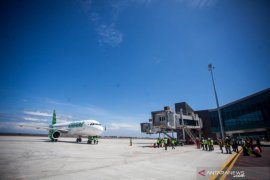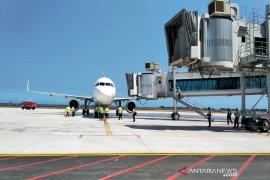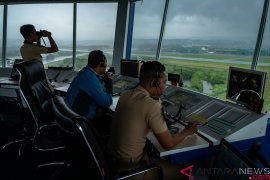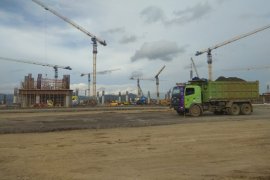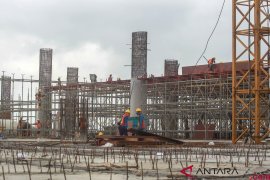The airport buildings have been designed to withstand earthquakes such as the unprecedented high magnitude earthquake on Java Island, Sumadi remarked during a discussion at the Meteorology, Climatology and Geophysics Agency (BMKG) in Jakarta.
State-owned PT Angkasa Pura I, the airport operator in cooperation with the Bandung Institute of Technology, and BMKG have conducted detailed studies to develop an airport on the earthquake and tsunami-prone land.
Before major infrastructure development is undertaken, Sumadi added, the risks and potential for disaster must be identified and studied in depth so that the airports, ports, and reservoirs can function safely and at maximal capacity.
The ministry`s Directorate General of Air Transportation has involved a number of researchers from the Indonesian Institute of Sciences, the Agency for the Assessment and Application of Technology (BPPT), BMKG, and Angkasa Pura I to create an engineering design draft on tsunami and earthquake disaster mitigation at the airport location.
Sumadi claimed that the Earthquake experts from these agencies have recommended preemptive measures to manage potential Earthquakes or tsunamis.
The potential for Earthquake and tsunami disasters in the southern subduction zone of Java is quite high, including in Kulonprogo, where the new airport is located.
Long before the ground breaking of the new Yogyakarta airport, held in January last year, BPPT had prepared six mitigation models to combat disasters in the airport area by optimizing sandbanks and the surrounding green belts. Among these models, the fifth one is considered the most effective and inexpensive to reduce the impact of disasters.
The model consists of three layers of sand dunes, a green belt (mangrove or pine shrimp), and a 200-meter ditch between the beach and NYIA.
The tsunami reduction structure in the form of a sand dune and a green belt will require some 1.7 million cubic feet of ditches and 50 hectares of green belt. Based on simulation results, a tsunami will only have a 1.1 percent impact on the new airport.
Reporter: Yashinta Pramudyani
Editor: Ade P Marboen
Copyright © ANTARA 2018


